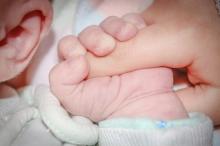
Children move through a developmental progression in the acquisition of motor skills. There are four phases of motor development: the reflexive movement phase, the rudimentary movement phase, the fundamental movement phase, and the specialized movement phase.1
The reflexive movement phase ranges from birth to about 1 year.2 Reflexes are involuntary movements, and through this reflex activity the infant gains information about his immediate surroundings. The infant’s reactions to touch, light, sounds, and changes in pressure trigger involuntary movements. These movements play an important role in helping the child learn about his body and the outside world.
Some of the reflexes involved in the reflexive movement phase include stability, locomotion, and manipulation movements. Stability movements include the labyrinthine righting reflex, which corrects the orientation of the body when it is taken out of its normal upright position, the neck righting reflex, and the body righting reflex. Locomotion reflexes include the spontaneous reflexes of crawling, stepping, and swimming movements before the actual movements can be accomplished. Manipulation reflexes include the palmar grasp reflex with the infant’s fingers flexing around a finger or object; the plantar grasp reflex with the toes flexing together when the bottom of the foot is touched; and the pull-up reflex with the shoulders and arms elevating.3
Since reflexes are the first forms of human movement and are not learned, they are considered to be abilities rather than skills. Reflexes serve as the primary means by which the infant is able to gather information, seek nourishment, and find protection through movement. Around the fourth month, the infant begins to process information, which begins a gradual inhibition of many of the reflexes, allowing the infant’s ability to control his movements to develop. Rather than merely reacting to stimuli, the child can process sensory stimuli with stored information and develop voluntary control of his movements. Once his reflexive movements begin to be replaced by voluntary movements, he enters the rudimentary movement phase.4
- 1. Gallahue, David L. and Frances Cleland Donnelly. Developmental Physical Education for All Children. 4th ed. Champaign, IL: Human Kinetics. 2003. p. 62.
- 2. Frost, Joe L., Sue Wortham, Stuart Reifel. Play and Child Development. Upper Saddle River, NJ: Prentice-Hall, Inc., 2001. p. 131.
- 3. Gallahue, David L., John C. Ozmun, and Jacqueline D. Goodway. Understanding Motor Development: Infants, Children, Adolescents, Adults. 7th ed. New York, NY: McGraw-Hill. 2012. p. 19.
- 4. Ibid. pp. 49-51.

